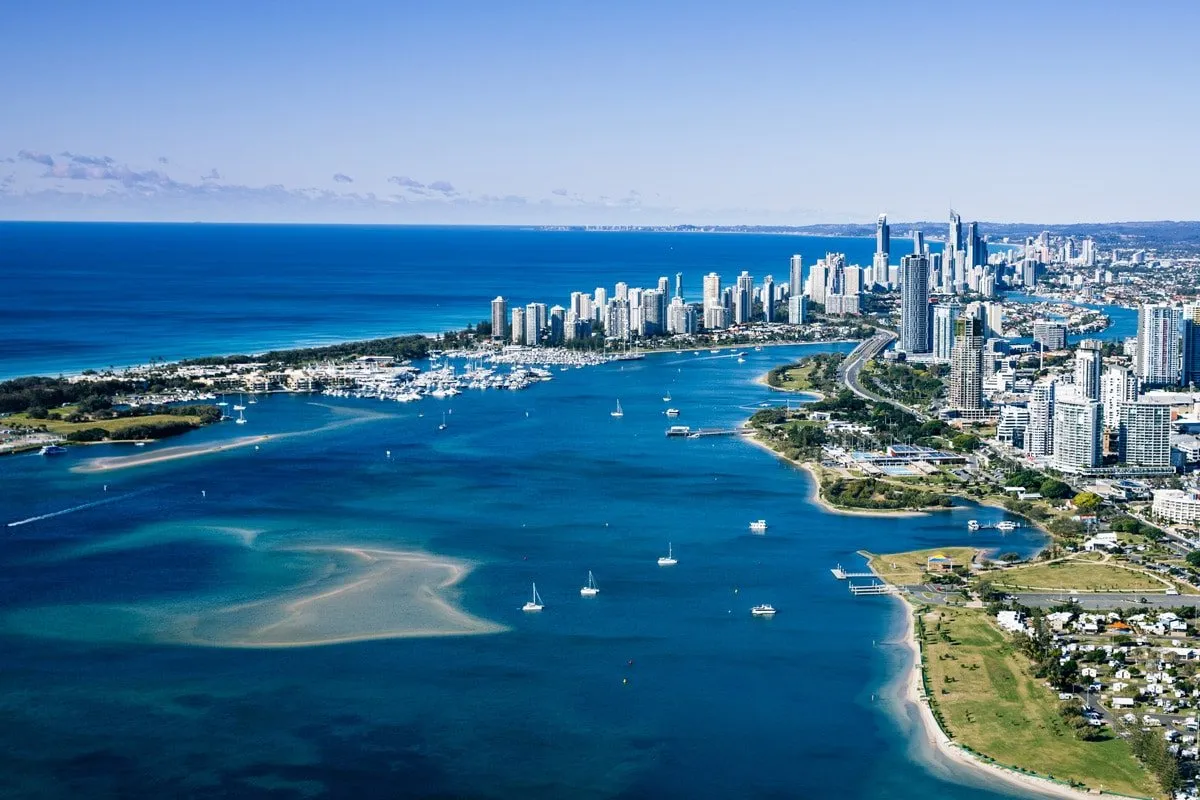Gold Coast History
The Gold Coast has become one of Australia’s most popular holiday playgrounds, a long way from the days when Captain Cook passed the coast in 1770 and named Point Danger and Mount Warning. The Gold Coast region was first put up for sale in 1874 when it was little more than a picturesque collection of lagoons and mangrove swamps with rivers and creeks meandering their way out to the ocean at Southport. By 1884, the Gold Coast was already becoming a popular holiday destination and Cobb & Co. started running regular coach services from Brisbane to the developing Gold Coast region. Further strimulation to the area’s development occurred in 1889 when a rail link between the Gold Coast and Beenleigh was completed. The rail link was removed 65 years later in 1964.
James Cavill was instrumental in the growth of the region when he built the Surfers Paradise Hotel in the early 1920s. He purchased the land in Elston (now known as Surfers Paradise) in 1923 for a princely sum of £40 (about $200). A bridge replaced the old horse ferry crossing the Nerang River in 1925 and in an effort to attract the more mobile and lucrative holiday market, the town of Elston (previously known as Meyers Ferry) was renamed “Surfers Paradise” in 1933 after the hotel Cavill had built 10 years earlier.
Property prices began rising sharply after WWII as there was an involuntary moratorium on the development and would-be developers could see an opportunity to cash in on a Post War boom. The greater region was given its modern moniker in the early 1950s when a journalist discussing the rising property values metaphorically referred to the area as the “Gold Coast”. The ensuing development boom of the 1950s saw a rush to build large beachfront holiday apartments to support the now rapidly growing tourist market. By the 1960s the beachfront had all but been completely developed and the urbanisation of the surrounding farms and wetlands began.
Gold Coast Aboriginal History
The Gold Coast region was known to local Aborigines as “Umbigumbi” and “Kurrungul”. The traditional borders of the Gombemberri people of the Gold Coast extended from the Tweed River in the south along the Coomera River to Numinbah Valley. Some historians estimate that Aborigines have been coming to the Gold Coast for over 10,000 years. They came to the Gold Coast from Bundjalung, south of the Tweed River, and from as far north as Maryborough in the north. They would visit the Gold Coast for festivals and tribal ceremonies, fishing, subtropical fruits and bush tucker and to harvest a special hardwood that they used to make boomerangs.
Related Links:
- Gold Coast Visitor Information – This section of the website provides general visitor and tourist information about the Gold Coast including links to more information.

